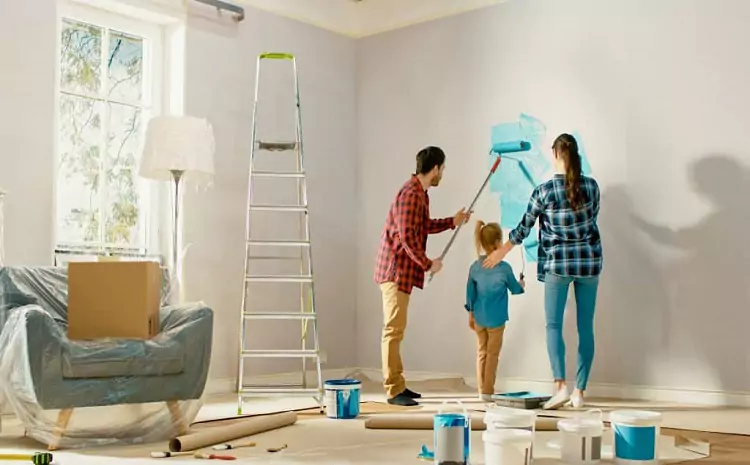Embarking on a home renovation project is an exciting yet daunting endeavor. The process not only transforms your living space but also challenges you to rethink the organization and safety of your belongings. To ensure a smooth transition during these changes, utilizing self storage units emerges as a strategic solution. This guide is designed to walk you through the crucial steps of selecting and preparing your items for storage, choosing the right unit, and managing your belongings throughout the renovation. By integrating storage solutions into your renovation plan, you can protect your furniture and delicate items from damage, maintain a clutter-free work environment for contractors, and ultimately, streamline the entire renovation process. Let’s explore how to navigate your home improvement journey with ease, keeping your possessions secure and your mind at peace.
Identify Items for Storage
Before diving into the thick of home renovations, identifying which items to store away is a pivotal first step. This decision not only clears out the necessary space for work to proceed smoothly but also safeguards your belongings from potential renovation-related damages. Furniture, decorative pieces, and any non-essentials are prime candidates for storage. Delicate items, such as artwork and electronics, require special consideration due to their sensitivity to dust and debris. Once you’ve pinpointed what needs to be kept away, finding a reliable storage solution becomes imperative.
Opting for Northwest Self Storage units can offer you the peace of mind that your belongings are secure and protected throughout the duration of your home makeover. With the right items tucked away safely, you can focus on the transformation of your living space, knowing your possessions are well taken care of.
Choosing the Right Storage Unit
Selecting the perfect storage unit is crucial for ensuring your belongings are well-protected during renovations. The size of the unit should accommodate all your items without cramming, allowing for easy access and airflow around stored goods.
Climate-controlled options are worth considering, especially for items sensitive to temperature fluctuations or humidity, such as wooden furniture, musical instruments, and electronics. Location is another key factor; a unit located nearby facilitates easier access to your belongings if needed. Security features, such as surveillance cameras, gated access, and individual locks, provide additional peace of mind.
Taking the time to evaluate these aspects ensures that your possessions are stored in a safe, accessible, and suitable environment, ultimately making your renovation project smoother and less stressful.
Packing Furniture for Long-Term Storage
When preparing furniture for long-term storage during renovations, certain steps ensure their preservation and readiness for future use:
- Clean thoroughly to prevent mold and pests.
- Disassemble large items to save space and protect against damage.
- Use protective covers for upholstery and wood surfaces.
- Place pallets or tarps on the floor to avoid moisture absorption.
- Leave space between items for air circulation.
For more detailed guidance on storing furniture and other household items safely, resources such as the Smithsonian’s Museum Conservation Institute offer invaluable advice. By following these recommendations, you can rest assured that your furniture will remain in the best possible condition, safeguarded from the elements and ready to grace your renovated home. These precautions not only protect your investments but also simplify the post-renovation redecorating process.
Protecting Delicate Items During Renovation
Ensuring the safety of delicate items during a home renovation is as crucial as the renovation itself. Fragile belongings, such as glassware, artwork, and electronic devices, require careful handling and strategic storage solutions.
Wrapping these items in protective materials, such as bubble wrap or soft packing paper, and placing them in sturdy boxes are essential steps to shield them from dust, debris, and accidental impacts. It’s also wise to consider a storage environment that maintains a stable temperature and humidity level to prevent any damage from environmental changes. For those particularly sensitive or valuable items, consulting a professional storage service that specializes in the care of delicate belongings might be beneficial.
Keeping these items secure not only preserves their physical condition but also their sentimental or monetary value. For more insights on safeguarding your personal items and overall health during renovations, it’s important to prioritize safety and cleanliness in your storage plan.
Accessing Your Stored Items
Gaining access to your stored items during a renovation can be necessary, whether it’s to retrieve a forgotten essential or to rotate seasonal items. Here are a few strategies to ensure easy access:
- Label all boxes clearly with contents and room designation.
- Create an inventory list with the location of items within the storage unit.
- Store items you may need to access at the front of the unit for convenience.
Implementing these steps can save you time and hassle when you need to find something quickly. Moreover, choosing a storage facility that offers flexible access hours can further ease the process. For additional tips on organizing your storage unit for optimal access, trusted resources such as the National Organization for Professional Organizers offer guidance. By planning ahead and organizing efficiently, you’ll keep your renovation project smooth and stress-free, with everything you need within easy reach.
Simplify Renovations with Storage
Incorporating storage solutions into your renovation plan is a game-changer. It not only protects your belongings but also declutters your space, allowing for a smoother renovation process. By carefully selecting, packing, and storing your items, you can navigate your home makeover with ease, ensuring everything is in perfect condition when it’s time to redecorate.

Mark Thompson, a seasoned pest controller, is renowned for his expertise in keeping homes and businesses free from unwanted intruders. With a passion for environmental sustainability and a deep understanding of pest behavior, Mark has become a trusted authority in the industry.
